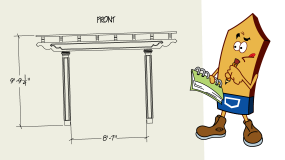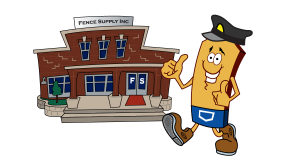If you’re looking for someone to build your fence, there are a few things you may want to know before hiring them. Like any other service industry, you want to make sure you’re dealing with someone who’s reputable. Although you’ll want to stay away from salespeople and contractors who ask for big lumps of money up-front, asking for a deposit is a common practice among fencing companies. If the company requires a deposit, make an agreement that you’ll give it to them the day they begin work, not the day you sign the contract. This will ensure they’ll show up with materials and be ready to work.
Another good tip is to find out if the contractor is bonded and licensed. Either the Department of Labor and Industries or the Construction Contractors Board can assist you in getting this information. You will also want to check and see if the fence contractor is part of a local trade association. When contractors are part of organizations like the Better Business Bureau, it shows they care about what customers have to say.
You should get multiple estimates from fence contractors, as well. Try to get at least three. You don’t want to go with the cheapest company; you want to check and see how much the company is charging you versus what the materials are worth. Within each estimate you will find the material and labor costs.
Within the estimate should also be a statement of exactly what will take place and the length of time being allotted for work. Ask for former customers’ phone numbers. You can also visit some of the homes the company has built fences for and check out the quality of the work. Take your time when looking for the right fence contractor. Your fence will last a long time if you get it right from the beginning.
Fence Supply Inc.’s Preferred Contractor Program
Finding a Contractor in the Dallas / Fort Worth, TX Metroplex is no longer a difficult process. Rely on Fence Supply Inc. to assist you with finding a suitable contractor for your project.
Quality Materials, Quality Contractors
Fence Supply Inc. can help you choose the best products through the process that we have developed over many years of experience.
If you want to do this yourself, we will be happy to guide and direct you along the journey. If you prefer to have one of our contractors install your project for you, Fence Supply Inc. can help you with some great fence contractor choices. Give us a call at (972) 226-0004 or visit our Contractor Referral Program for more information. Since 1969 Fence Supply Inc. has been successfully recommending installation professionals to Homeowners, Business Owners, Government organizations, and other clients, big and small. We want to make sure you have a good fit and a great experience. We only recommend contractors to you that we would recommend for our friends and family.



